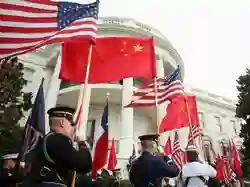Intelligence data from the United States (US) reveals that the country’s biggest military threat is posed by China. The intelligence community in the US, in a report titled “Annual Threat Assessment,” highlighted China’s advancements in military capabilities, including in the cyber domain. The report, as summarized by detikcom on Wednesday (March 26, 2025), points to China’s “coercive pressure” on Taiwan and “widespread cyber operations targeting the US” as indicators of an increasing threat to US national security.
Key Points from the Intelligence Report:
-
Primary Military Threat: China presents the most comprehensive and powerful military threat to US national security.
-
Capabilities: China has deployed sophisticated weapons, including hypersonic missiles, stealth aircraft, advanced submarines, cyber warfare assets, strong presence in space, and a larger nuclear arsenal.
-
Covert Activities: The US intelligence report warns that Beijing will continue to expand “coercive and subversive malign influence activities” to weaken the US internally and globally.
-
Global Agenda: China is expected to counter what it views as a US-led campaign to tarnish Beijing’s global relations and undermine the Chinese Communist Party.
Other Analyzed Threats:
- Countries: The intelligence assessment also analyzes threats posed by Russia, North Korea, Iran, as well as “transnational non-state actors” including Mexican drug cartels and extremist groups.
China’s Response:
-
US Allegations: Chinese authorities, through Foreign Ministry spokesperson Guo Jiakun, urged Washington to stop viewing China with its “hegemonic mentality.” China accuses the US of spreading theories about China being a threat to contain and suppress the nation.
-
Taiwan Stance: China called on the US to stop colluding and supporting Taiwan’s independence activities.
The intelligence report was released by the US Director of National Intelligence, Tulsi Gabbard, with assessments presented during a Senate hearing on Tuesday, March 25. China’s increasingly assertive military posture and activities feature prominently in the US security concerns.

 Kecelakaan Jeju Air Diduga Terjadi Akibat Bird Strike, Apa Sebenarnya Itu?
Kecelakaan Jeju Air Diduga Terjadi Akibat Bird Strike, Apa Sebenarnya Itu?